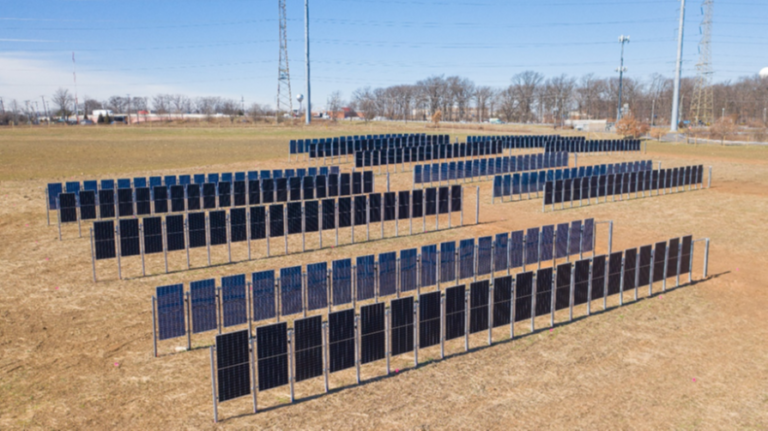US-based Sunstall has implemented a vertical agrivoltaic facility based on its racking solution in the United States. The system consists of 18 rows of 21 panels and has a total power of 170 kW.
US-based startup Sunstall has installed an agrivoltaic system based on its proprietary racking solution for vertical PV installations.
The solar panels are part of a research project conducted by Rutgers University in New Jersey. The south-facing system consists of 18 rows of 21 panels with a total capacity of 170 kW.
“Rutgers selected ZnShine 450W bifacial solar panels with a bifacial score of 70%,” the company said. “The panel orientation was varied throughout the system, allowing the optimal orientation to be determined. Power optimizers were installed so that the output of pairs of panels could be monitored, ensuring optimal energy generation and efficiency.”
Sunstall used two different row spacings and panel mounting heights were used in the experimental design.
“Researchers will plant a forage crop in April and begin grazing beef cattle in September,” the company said. “The aim is to study the impact of the agrivoltaic system on forage production and animal grazing, including any behavioral changes that the animals may exhibit when grazing between the panels.”
According to the manufacturer, the Sunzaun racking system can guarantee up to 120 cm of distance to the ground and can tolerate a maximum wind speed of 167 km/h. It can be deployed on flat areas and areas with a slope of up to 15 degrees.
The rack system is designed to accommodate bifacial solar panels in upright module orientation. The design uses holes in the module frames to allow for easy attachment to two posts, eliminating the need for a heavy racking system.
The vertical orientation of the panels creates a production curve that serves the electrical grid, avoiding the midday production peak of traditional utility-scale arrays. It has other dual-use benefits, such as providing shade for crops and saving irrigation water.
This content is copyrighted and may not be reused. If you would like to collaborate with us and reuse some of our content, please contact: editors@pv-magazine.com.


